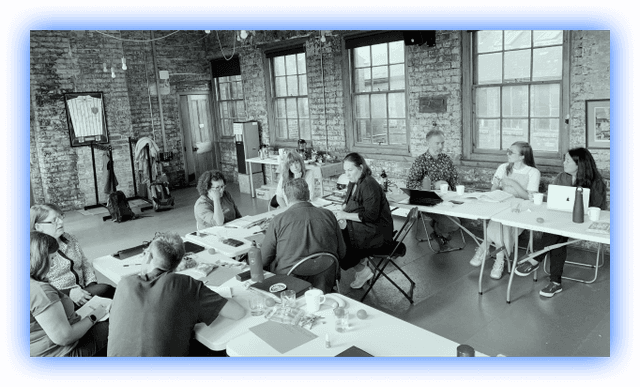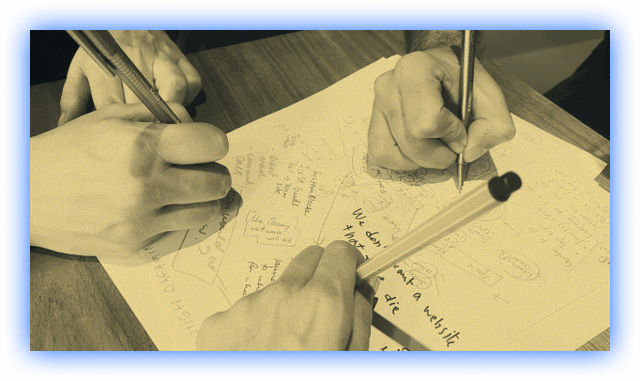Learnings from the Field
We co-developed the Many-to-Many System in close partnership with experienced practitioners. Here, they offer a dual perspective: sharing insights from their own complex governance work and their firsthand experience testing components of the Many-to-Many System.
Case Studies
From the Field

Dive deeper into the real-world examples of complex collaborations and find multiple approaches, shaped by context, values, and experimentation
Top Tips
From the Field

Explore the top tips of practitioners working in real-world contexts of people tackling complex, entangled challenges - and disrupting norms in how we see value, ownership, power and risk
Find out more below about who we are learning with, and how these case studies and top tips were developed
Introduction to the Field
Who, what and how
Who are we learning with?
The Many-to-Many “Proof of Possibility” was brought to life by a dedicated Learning Network of practitioners and organizations committed to exploring ways of collaborating. This includes Dark Matter Labs, the Legal Plumber, Local Motion, Huddlecraft, Plymouth Octopus Project, We are Opus, Foundation Scotland, Lankelly Chase. This work was generously supported by Arising Quo, Lankelly Chase, and Laudes Foundation.
This initiative didn’t start from scratch; it emerged from a rich history of fieldwork and shared inquiry. You can explore this full story on Many-to-Many Journey page.
What are the learnings from the Field?
Here, Huddlecraft invites you to explore the experiences of four network participants through in-depth case studies and their insights synthesised into top tips.
Both incorporate their reflections on co-developing the system, lessons from testing its components, and valuable wisdom from their own extensive work in complex collaborations.
How did we conduct this learning?
The case studies and top tips were developed by Huddlecraft, through in-depth interviews, survey responses and shared project documentation.
Who was interviewed?
The practitioners we interviewed as part of this process were:
- Annette Dhami, Beyond the Rules team, Dark Matter Labs
- James Lock, Opus Independents (Opus)
- Kathleen Kelly, Local Motion
- Leah Black, Regenerative Futures Fund (RFF)
- Lisa Clarke, PG Collective (and previously Lankelly Chase)
- Matt Bell, Plymouth Octopus (POP)
- Michelle Zucker, Beyond the Rules team, Dark Matter Labs
Who is this for?
These are for anyone working on complex, entangled challenges looking for inspiration. You might be particularly interested if you are: a governance practitioner exploring how to hold complexity and build trust in collaborative work; a funder interested in how to redistribute power and support emergent asset allocation; a legal professional who is mindful of how their role and their stewardship of contracting, risk and accountability can impact complex collaborations, and who is looking to adapt their practice.
Case Studies
From the Field
Complex Collaboration in Practice: Case Studies from the Field
These case studies explore real-world contexts where people are tackling complex, entangled challenges - and disrupting norms in how we see value, ownership, power and risk. They were developed through seven in-depth interviews, survey responses and shared documentation about each of the projects. The initiatives featured are independent efforts that predate and sit alongside the work of the Many-to-Many System. We’re sharing these examples to demonstrate how people are doing complex collaboration work in practice - including distributed governance, collaborative resourcing, shared infrastructure, and deep relational work.
What are the learnings from the Field?
This is not a set of uniform case studies. There is no single way of doing complex collaboration. What you’ll find here are multiple approaches, shaped by context, values, and experimentation. We’ve tried to show not just what worked, but what changed, where things got stuck, and how people held the ambiguity of this work.
Each story includes:
- Context: What the initiative was trying to do
- What’s being disrupted: The intended shifts created through this approach
- What it looked like in practice: How the complex collaboration unfolded in practice
- What changed: How expectations evolved along the way
- Hard bits: Where the work got hard, and what was learned
- Insights & tips: Practitioner tips for others doing complex collaboration work
- Looking ahead: Where next for this initiative
Top Tips
From the Field
Complex Collaboration in Practice: Top Tips from the Field
These tips are drawn from and rooted in real-world contexts where people are tackling complex, entangled challenges - and disrupting norms in how we see value, ownership, power and risk. They are from initiatives which are independent efforts that both predate and sit alongside the work of the Many-to-Many System.
What are we sharing
We’re sharing these tips as a synthesis of some of the insights emerging from case studies we’ve developed to serve as inspiration for others doing this work. Please note these are generalised tips from practitioners, and so might miss some of the nuance for specific contexts - we encourage you to read the full case studies with more contextualised insights.
Top Tips for Complex Governance Practitioners and Process Stewards
You’re supporting a group of people to navigate complexity, difference, and uncertainty together, towards a mission that requires collaboration across many different actors. You are building and testing structures to organise, make decisions and learn together. Your work is emotional, political and often invisible - and yet, without it, distributed governance doesn’t stick.
Top Tips for Funders
You’re in a position to unlock resources, shift power, and change how risk ripples through the system. Traditional approaches to funding often repeat patterns you want to move away from and towards more collaboration, trust and emergence.
Top Tips for Legal Professionals
You’re working at the edges of law, governance, and care. In complex collaborations, legal frameworks can either constrain what’s possible - or expand the space for trust, emergence and mutual accountability. These insights are for those shaping legal artefacts and structures not as gatekeepers, but as enablers - often working behind the scenes to make new governance forms viable.



